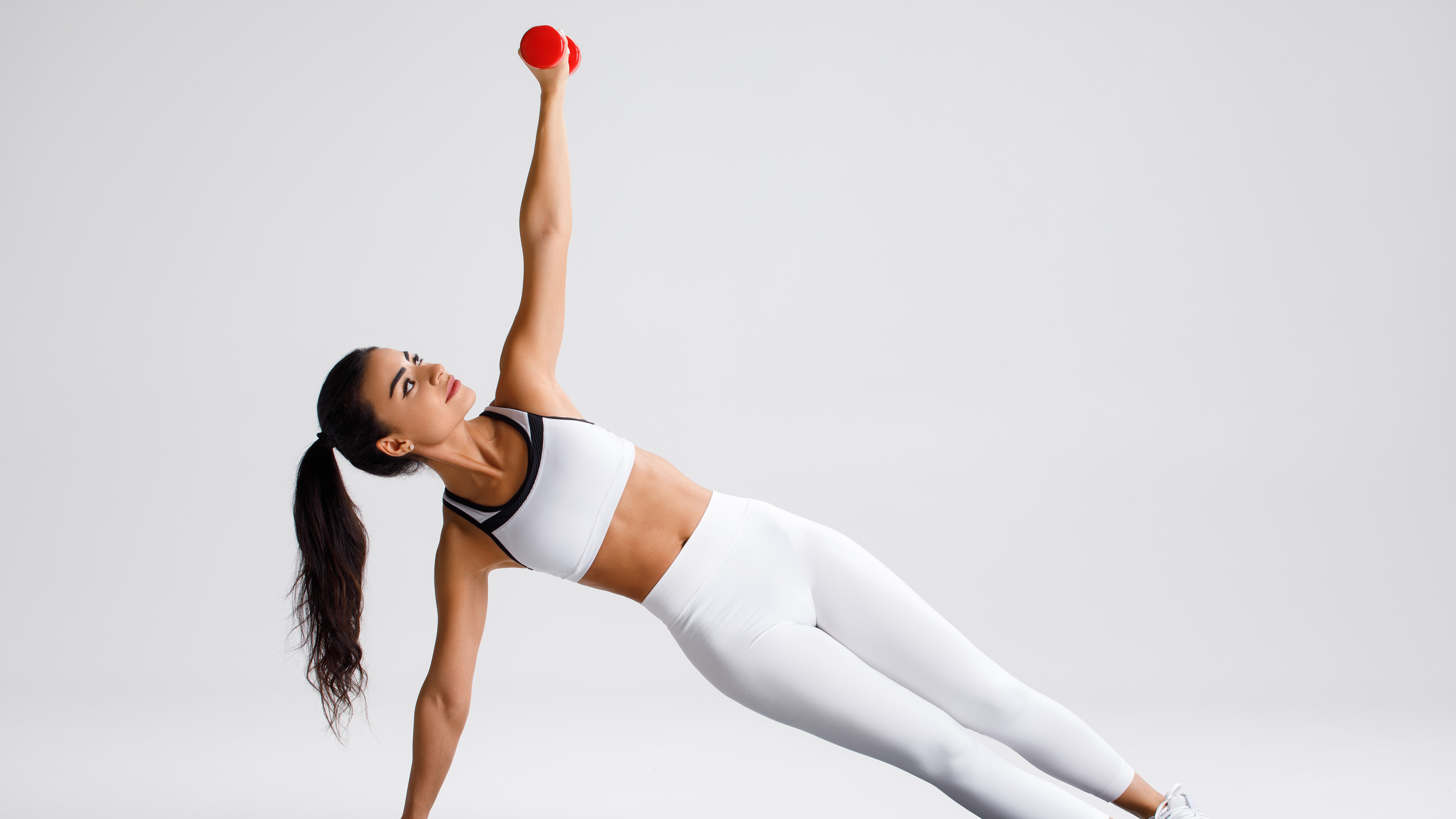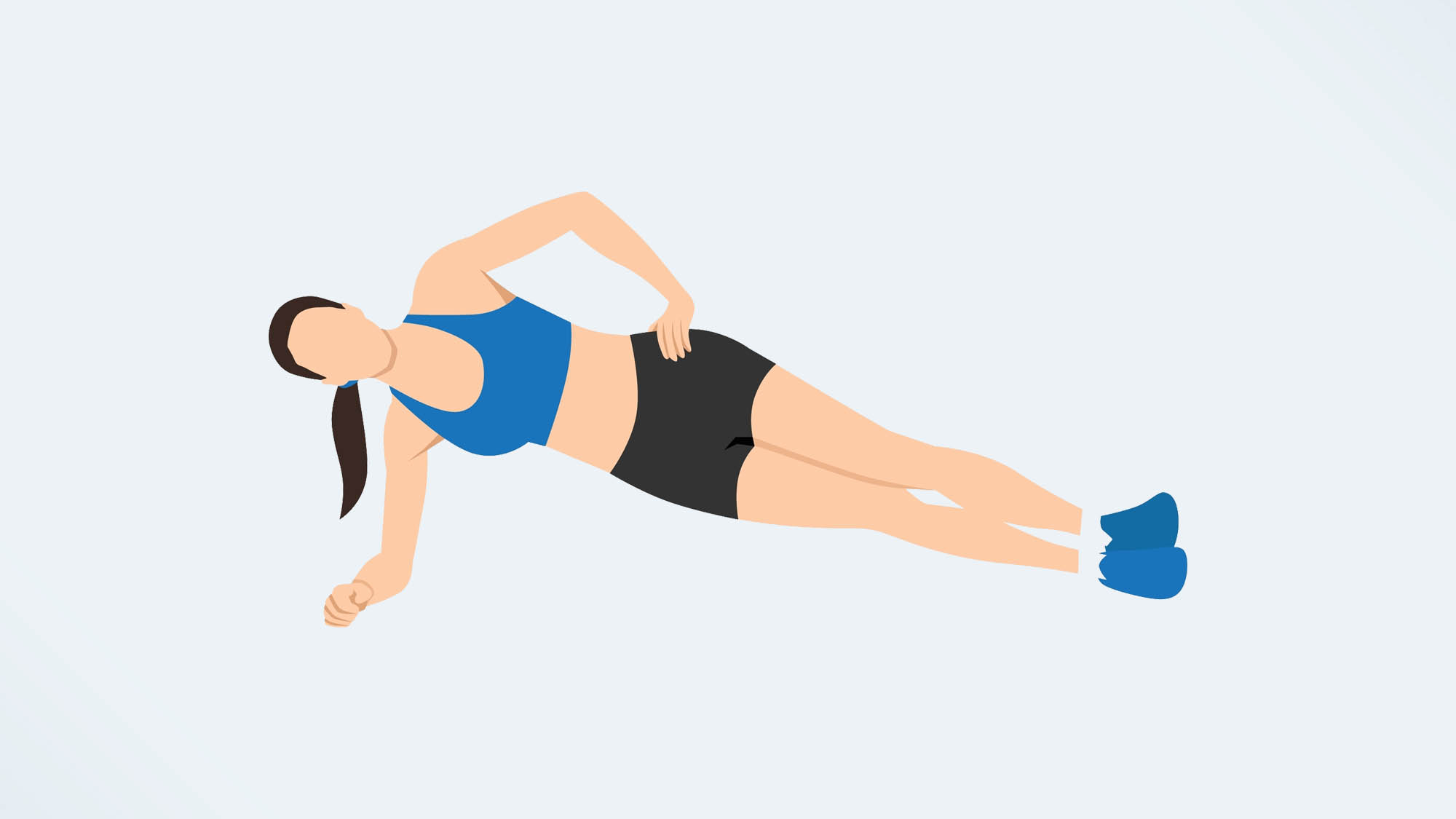I did weighted side planks for a week — here’s what happened to my abs
Is this the secret to strong obliques?

As all dedicated Tom’s Guide readers will know, there’s nothing we love more on the fitness desk than a workout challenge. Next up in our quest to find the best ab exercises out there — weighted side planks, also known as dumbbell side planks. What would happen when we added them to our workout routine for a week? Read on to find out.
When working on our core, most of us focus on the six-pack muscles that run along the front of the body, but the oblique muscles, that run along the side of the body, are equally as important. The side plank is one of the best ab variations for targeting your oblique muscles, so it’s a good bodyweight exercise to work into your routine.
Far from being just an aesthetic goal, strong obliques are essential if you want to improve your posture, protect your spine, and run and lift weights with more balance. In fact, research has shown that a strong core can alleviate chronic lower back pain and help protect athletes from developing such problems in the first place.
As a reminder, what works for me might not be right for you and your body. If you’re new to an exercise, or returning to ab workouts following an injury, it’s a good idea to check your form with a personal trainer before adding weight to the move — bodyweight side planks are challenging enough, and will still give your obliques a good workout. It’s also not recommended to train your abdominal muscles every single day, as your body needs time to rest and recover.
How to do weighted side planks
To do a weighted side plank, you’ll need some sort of weight — a set of the best adjustable dumbbells or a weight plate in the gym will do.
- Start by lying on your side on an exercise mat, or one of the best yoga mats on the market. Lie straight out, with your legs stacked, and your forearm resting flat on the floor, with your elbow in line with your shoulder.
- Hold your weight against your hip in the hand that isn’t resting on the floor.
- Engage your abs, thinking about squeezing your belly button into your spine, and raise your hips and knees off the floor. Try and keep a straight line from your head to your feet. Only your forearm and foot should be touching the ground.
- Hold the weight steady on your hip. Don’t let your hips sag back down to the floor. Hold here. Start with 30 seconds, and build up.
- To make the move more challenging, hold the weight in your top hand and perform side plank twists, lowering the weight down to the ground and underneath your body, twisting from your core, then raising the arm back up to the ceiling, without letting your hips drop.

One of the benefits of this exercise is that it targets the internal and external oblique muscles, which help rotate and bend your trunk, and protect your spine. You’re also working the deep stabilizing muscles in your hips, trunk, and shoulders, and your glutes. Here’s what happened when this fitness writer did bodyweight side planks every day for a week.
I did weighted side planks for a week — here are my results
As always, I wasn’t expecting any visual changes by focusing on this move every day for a week — if visible ab muscles are your goal, you’ll need to focus on getting a balanced diet, and cardio, as well as ab workouts to lower your overall body fat percentage. Here’s how to calculate your body fat percentage, and why it matters. Either way, I expected this one to work my core hard, and I wasn’t wrong. Here’s my training diary from the week:
Sign up to get the BEST of Tom's Guide direct to your inbox.
Get instant access to breaking news, the hottest reviews, great deals and helpful tips.
Day 1
As with all of these challenges, I didn’t know what to expect on day one. I decided to opt for three minute-long planks (30 seconds on each side), with a minute break in-between to turn this into a five-minute ab finisher after my leg workout. I grabbed one of the Bowflex SelectTech 552 adjustable dumbbells (the best thing I’ve bought for home workouts), and got to work.
The first thing I noticed was how much harder the move became as I tried to hold the dumbbell against my top hip. Perhaps unsurprisingly, the extra weight made my core work harder as I tried to keep my hips lifted. I also had to really think about squeezing my glutes throughout.
Day 2
On day two of this workout, I decided to up the intensity, holding each side plank for 45 seconds each side. I was definitely wobbly, and holding my breath by the end of each set — something to work on as the week progressed. I also noticed that I found the side planks on my right hand side easier than those on the left. While it’s normal to have one stronger side, this can lead to imbalances and injuries, so this was another thing to work on.
Days 3 and 4
On day three of the challenge, I filmed myself and sent it over to a personal trainer friend to get her to check my form. She noticed that as I reached my final set and got tired, I had a tendency to let my hips drop and roll inwards slightly, effectively making the move easier. She recommended lowering the weight, and really focusing on my form.
When it comes to selecting the right weight for an exercise, it’s important to ensure that the weight isn’t compromising your form. As always, the exercise should feel challenging by the final few seconds, or final few reps, but not impossible.
Day 5
On day five, I mixed things up and grabbed a much lower weight — 3 kg, and did side plank twists instead. I aimed to do two sets of a minute on each side. I instantly found this a lot harder than the stationary side planks, and really had to work to keep my core engaged and my hips from dropping . The benefit was my arms got a workout, too.
Day 6
On day six, I returned to the stationary side planks, but kept the lighter weight, this time holding the dumbbell above my body, with my arm straightened, for the 30 seconds on each side.
Like other plank variations, the goal here was to stay as still as possible — while crunches and sit-ups work the core, there’s also a lot to be said for bracing exercises that focus on ‘anti-movement’. These kind of exercises strengthen the core, but also teach you how to switch on these ab muscles, essential for runners who should do this to run with the correct form.
Day 7
At last, the end was in sight. On my final day of this challenge, I returned to the sequence I tried on day one, but this time did three sets of one minute on each side. My core was shaking by the end, and my obliques felt like they’d gotten a proper workout. Of course, they still looked the same, but I felt that the side planks had gotten slightly easier as the week went on, and highlighted that I need to do them more often, especially on my weaker left side.
The next step is to be able to lift my top leg off and hover it in the air while holding the weight. I’m not quite there yet, but one day — just don’t tell my editor, or this will be next on my list of challenges!
More from Tom's Guide

Jane McGuire is Tom's Guide's Fitness editor, which means she looks after everything fitness related - from running gear to yoga mats. An avid runner, Jane has tested and reviewed fitness products for the past five years, so knows what to look for when finding a good running watch or a pair of shorts with pockets big enough for your smartphone. When she's not pounding the pavements, you'll find Jane striding round the Surrey Hills, taking far too many photos of her puppy.
